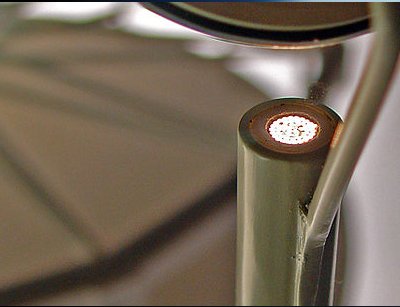The University of Southampton in the UK is working on a £7.2m project that will investigate ways to make the internet 100 times faster and more energy efficient, using fiber optics and new materials to increase internet bandwidth.
And in a separate project, working with Penn State University, it appears the university could be on its way to achieving its goals with new “smart” fiber optic technology the can overcome current day caching issues.
University of Southampton Optoelectronics Research Center Director Professor David Payne said UK project proposes a “radical transformation of the physical infrastructure that underpins” networks that will be used for Internet television services and cloud computing.
He said it could have a huge impact on transactions undertaken by the retail and banking sector, for example, offering faster transaction times.
The work being carried out with Penn State University in the US has seen the university develop new crystalline materials to allow optical fiber to include integrated high-speed electronic functions, according to a report by Science Daily.
It said such developments will improve telecommunications and other hybrid optical electronic technologies, even allowing for better remote sensing.
In the report, Penn State university Department of Chemistry’s Professor John Badding said that the industry is currently trying to overcome issues seen when exchanging information between electronics and optics.
Work at the universities, which has included investigated ways to take information usually placed on chips and storing it in optical fiber – a challenge because of the chips size and shape - should help this occur in a more efficient and fast manner.
"The optical fiber is usually a passive medium that simply transports light, while the chip is the piece that performs the electrical part of the equation," Badding said.
"For example, light is transmitted from London to New York via fiber-optic cables when two people set up a video call on their computers. But the computer screens and associated electronic devices have to take that light and convert it to an image, which is an electrical process. Light and electricity are working in concert in a process called an OEO conversion, or an optical-electrical-optical conversion."
He said the development of “smart fiber” will allow for electronic functions to come already built into the optical fiber.
University of Southamptiont team leader Pier JA Sazio said the team have bypassed the need to build a chip into the fiber:
"The big breakthrough here is that we don't need the whole chip as part of the finished product. We have managed to build the junction -- the active boundary where all the electronic action takes place -- right into the fiber."

